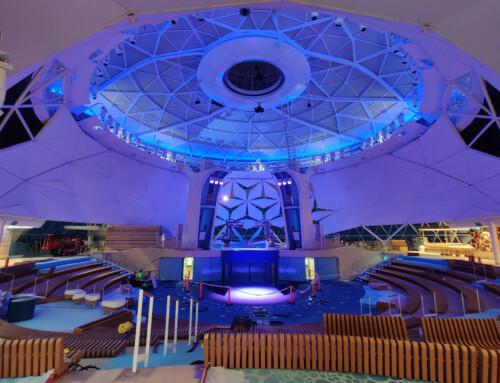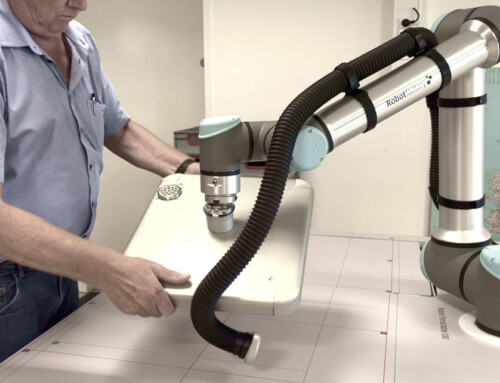






Founded in 1911, Fredericia Furniture is among the most prominent and traditional names in Danish design. The company’s breakthrough came in the 1950s and 60s, and today it produces world-renowned classics at its Fredericia and Svendborg facilities. The collection is luxury-class, defined by functionality, clean aesthetics, and uncompromising craftsmanship.
Acquisition Created Room for Technological Innovation
On October 1, 2020, Fredericia Furniture acquired Erik Jørgensen Møbelfabrik, bringing together design archives and expertise under one roof. Even before the merger, Erik Jørgensen’s classic sofas were produced in Svendborg; afterwards, much of Fredericia’s upholstery work moved there.
Production in Fredericia continues with wood and leather icons such as the Spanish Chair, J39, and Mogensen sofas.
An Important Investment in Digital Cutting Technology
At Fredericia, quality and craftsmanship go hand in hand – including in technology investments.
For years, leather and textiles were cut manually by skilled craftsmen. But like much of the manufacturing world, the drive for efficiency and optimal material use led to new solutions – especially the ambition to maximize leather utilization.
In late 2022, the factory installed a state-of-the-art Zünd G3 2XL-3200 digital cutter, complete with cradle feeder for fabric rolls and MindCUT Studio, which photographs leather hides and optimizes cut placement.



Study Trip to a Fellow Colleague
One of the first steps after purchase was visiting Søren Lund Møbler near Randers, already experienced in digital cutting. Fredericia gained valuable insights to implement in its own production.
Production Manager Maria Fredslund explains:
“Even though we’re competitors on paper, we share a love for craftsmanship. Their openness helped us transition smoothly to digital cutting.”
Smaller Staff, Greater Output
The arrival of the new Zünd digital cutter marked a decisive turning point in production at Fredericia Furniture. When two seasoned employees retired at the same time, their roles were not replaced – the technology took over.
This upgrade has not only reduced the reliance on manual labor but also freed up valuable time across multiple departments. Where significant resources once went into hand-cutting and coordinating between the cutting station and upholstery, today the process flows far more efficiently.
“Before, the upholstery department would often stand idle, waiting for leather or fabric cuts – now, that’s a rare occurrence.”
“Two people now handle work that once required five – and more efficiently,” Maria Fredslund notes.

Production speed has risen by around 30%, impacting every stage of the process – from order receipt to finished furniture. This delivers not only faster lead times but also more consistent, precise quality in every cut.
To ensure resilience and continuity in staffing, a third operator has been trained, strengthening the team during illness or personnel changes. There is no doubt that the combination of fewer hands and greater capacity has proven a win both economically and operationally.
The cutter has therefore delivered more than just savings in time and labor – it has paved the way for a more flexible, future-ready production where quality and efficiency work in perfect harmony.
Focus on Flexibility
When we enter the production area, Katja and Anette are busy cutting leather for two Corona chairs. Three large hides are spread out on the cutter table, and within a few minutes, the cutting is finished.
The next task – cutting fabric from a roll – is started immediately. This very ability to quickly switch between materials is a fundamental part of Fredericia Furniture’s production DNA. Because everything is made to order, there is a need for high flexibility and a production setup that can keep up.
Although tasks are grouped as much as possible to optimize flow and material utilization, it often happens that production switches between leather and textile many times throughout the day.
From Hand-Cut to Digital Precision
The transition to digital cutting was – as with any major change – met with some skepticism. Particularly among experienced employees who had processed leather and textile by hand and eye for many years.
“There was a clear conviction that hand cutting gave the most beautiful result,” explains Anette, one of the two permanent operators on the machine. “But we must also acknowledge that it’s necessary to invest in the future – regardless of how things were done before. It makes really good sense.”
A Patient Tommi and Top-Class Support
In the beginning, everything was new. The functions were numerous and the screen could seem overwhelming. But gradually, familiarity has grown and the operators navigate confidently through both software and setup.
“Sometimes we still get a small ‘error 40’,” Anette laughs, “where we’re not quite sure if it’s us who made a mistake, or the machine acting up.” But when help is needed, the service level is high. Generally, there are few problems with the machine and the need for urgent support is rare.
“We typically gather the tasks together for the scheduled service check – that’s sufficient in most cases.”
Cutting Templates in New Digital Form
Previously, cuts were controlled by physical cutting templates made of cardboard and plastic, which hung closely side by side on hangers in production – a solution that worked, but also made production vulnerable to fire, wear, and theft.
Today, the entire collection has been digitized using MindCAD Part Scan. This has not only increased security – it has also provided better overview, traceability, and the possibility for more efficient material utilization.
When an order comes in, the operator can quickly find the necessary cutting files based on item number and serial number and combine them with other orders, so materials are utilized optimally and production runs in a streamlined flow. Today, the Zünd cutter is a natural part of the workday and the results speak for themselves.














